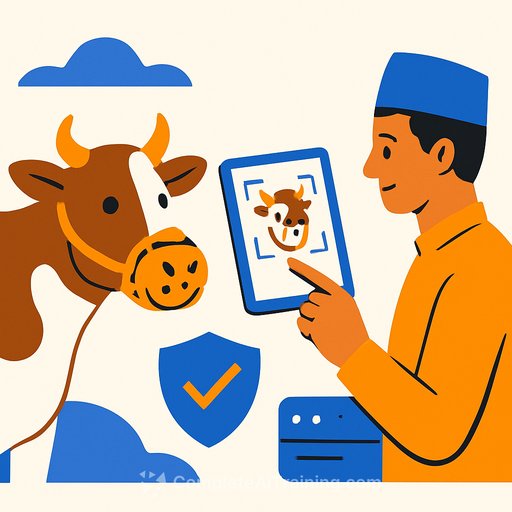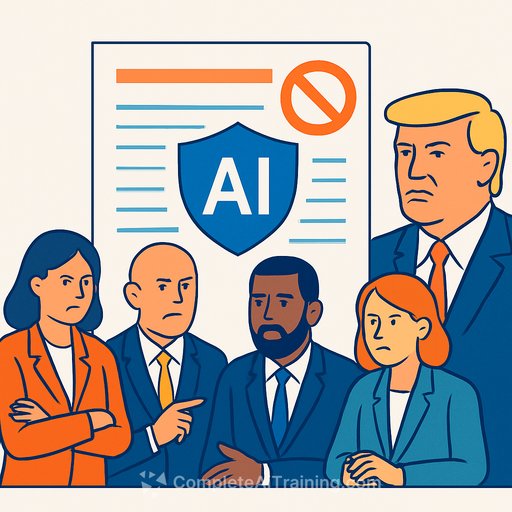AI-Enabled Livestock Insurance Rolls Out in Nepal: What Insurers Need to Know
An AI-based livestock insurance program is live in select districts of Nepal with support from the United Nations Development Programme (UNDP). United Ajod Insurance leads the initiative, with technical delivery from PlantSat.
The product focuses on cows and buffaloes and went live in June across Humla, Lalitpur, and Achham. The aim is simple: protect smallholder farmers while controlling loss leakage and speeding up claims.
How the model works
- Digital enrollment: Farmers enroll livestock through a mobile app. The app works offline, so sign-ups and updates continue even without network coverage.
- Biometric ID (muzzle-based): PlantSat's technology captures a biometric "muzzle print" to uniquely identify each insured animal.
- Claim verification: When an animal dies due to disease or accident, the farmer submits photos/videos via the app. AI compares them with pre-insurance records to confirm identity and policy status.
- Remote, faster claims: Most claims can be filed and triaged without a branch visit, reducing turnaround time and field costs.
Why this matters for underwriting and claims
- Identity certainty: Biometric matching lowers identity fraud and duplicate claims.
- Lower LAE: Digital FNOL and remote triage trim site visits and adjuster hours.
- Better reach: Offline capability supports distribution and service in remote areas.
- Data for pricing: Consistent photo/video baselines improve portfolio analytics over time.
Operational checklist for carriers and brokers
- Data standards: Define required pre-coverage media (angles, lighting, minimum resolution) and metadata (geo, time).
- Consent and records: Capture owner consent, animal ownership proof, and clear audit trails for every action.
- Triage rules: Set confidence thresholds for automated approvals, partial approvals, and human review.
- Escalation paths: Route edge cases (injury-obscured muzzle, decomposition, image tampering) to specialist adjusters.
- Integrations: Sync with policy admin, claims, payments, and reinsurance bordereaux to keep books aligned.
- Offline ops: Establish sync windows, conflict resolution rules, and device hygiene for field teams.
- Training: Educate agents and farmers on capturing usable images and filing claims from the app.
Risk, ethics, and compliance considerations
- Model accuracy: Track false match and mismatch rates; keep a human-in-the-loop for low-confidence cases.
- Drift and re-training: Monitor performance by geography, breed, age, and environment; re-train with fresh data when needed.
- Security and privacy: Protect owner identity and farm location data; apply encryption, access controls, and clear retention policies.
- Regulatory alignment: Ensure disclosures cover AI usage in claims decisions and maintain transparent appeal processes.
KPIs to watch in the first year
- Average FNOL-to-payment time
- Loss adjustment expense per claim
- Field visit rate and reduction versus baseline
- Fraud detection rate and prevented loss amount
- Automated decision rate at target confidence thresholds
- App adoption and offline sync success rate
- Claim acceptance ratio and re-open rate
What's next
If results hold, expect expanded coverage across more districts and potentially other livestock categories. Over time, richer datasets can support risk segmentation, product refinement, and better reinsurance conversations.
For context on the development partner, see UNDP Nepal.
Upskilling claims, underwriting, and ops teams on practical AI can accelerate adoption. Explore role-based learning paths here: AI courses by job.
Bottom line for insurance professionals
This initiative shows how biometric verification and remote claims can make livestock insurance more reliable and accessible without bloating costs. Start with strong data standards, conservative thresholds, and clear auditability, then scale with confidence as performance stabilizes.
Your membership also unlocks:






